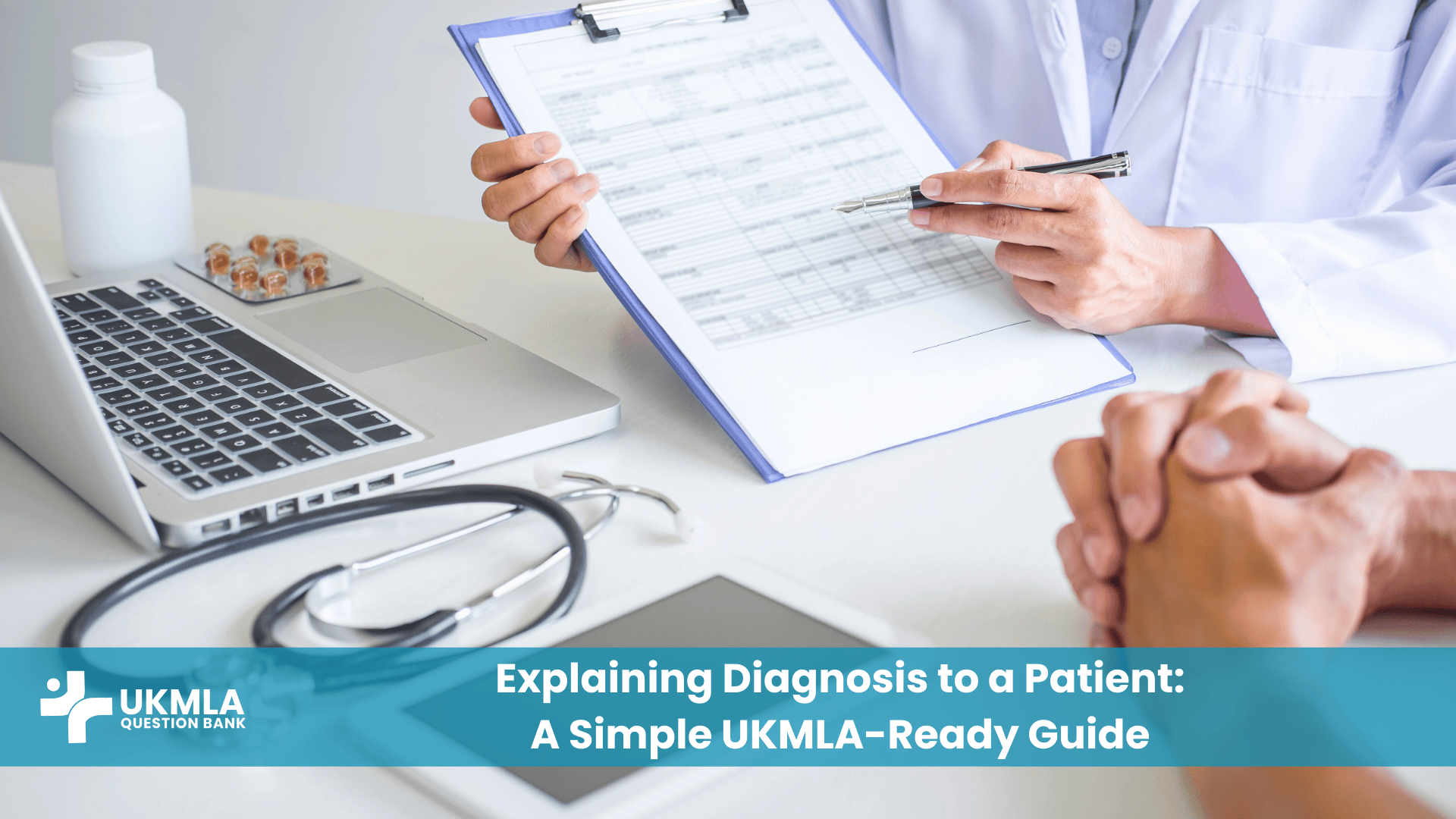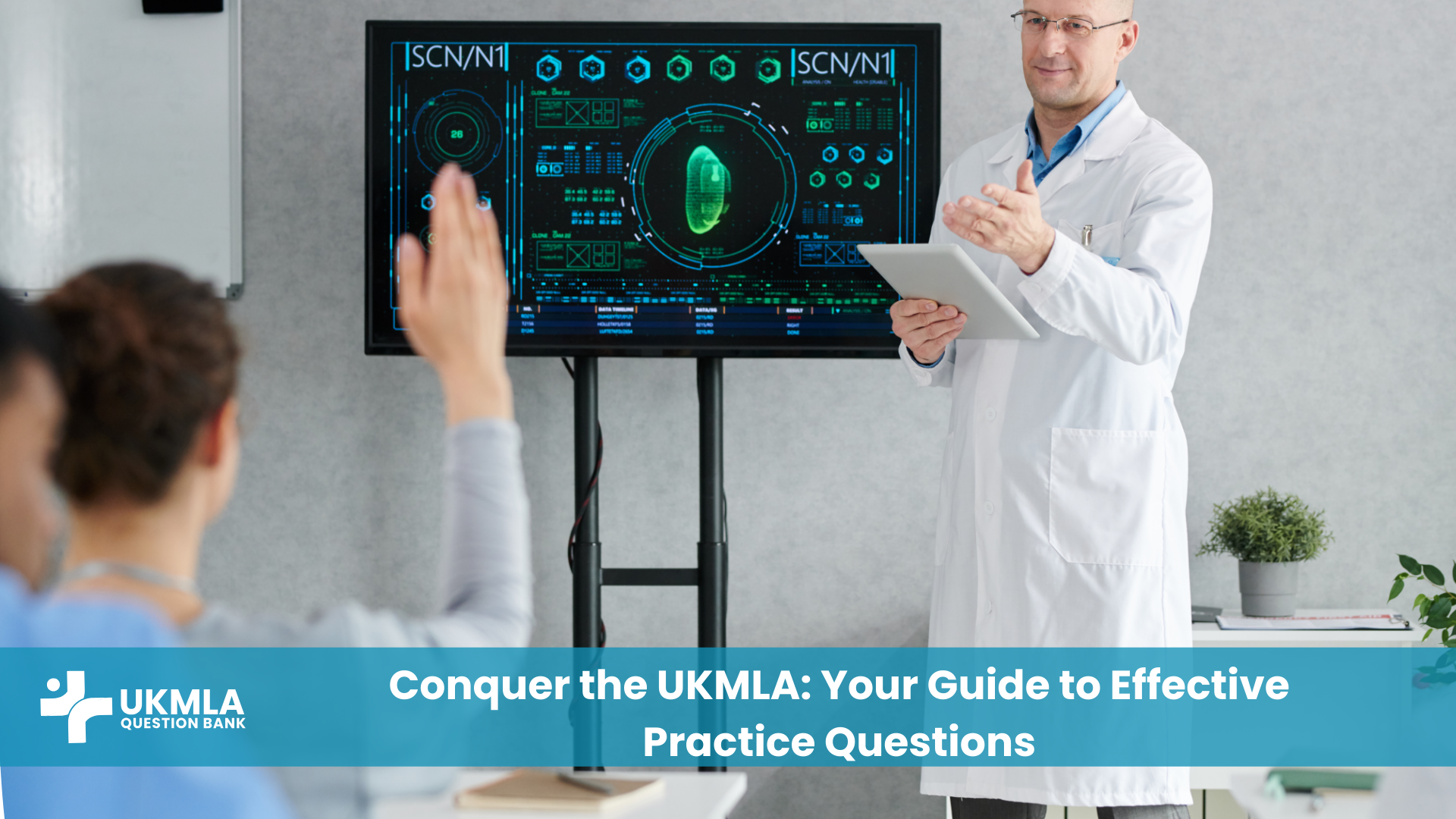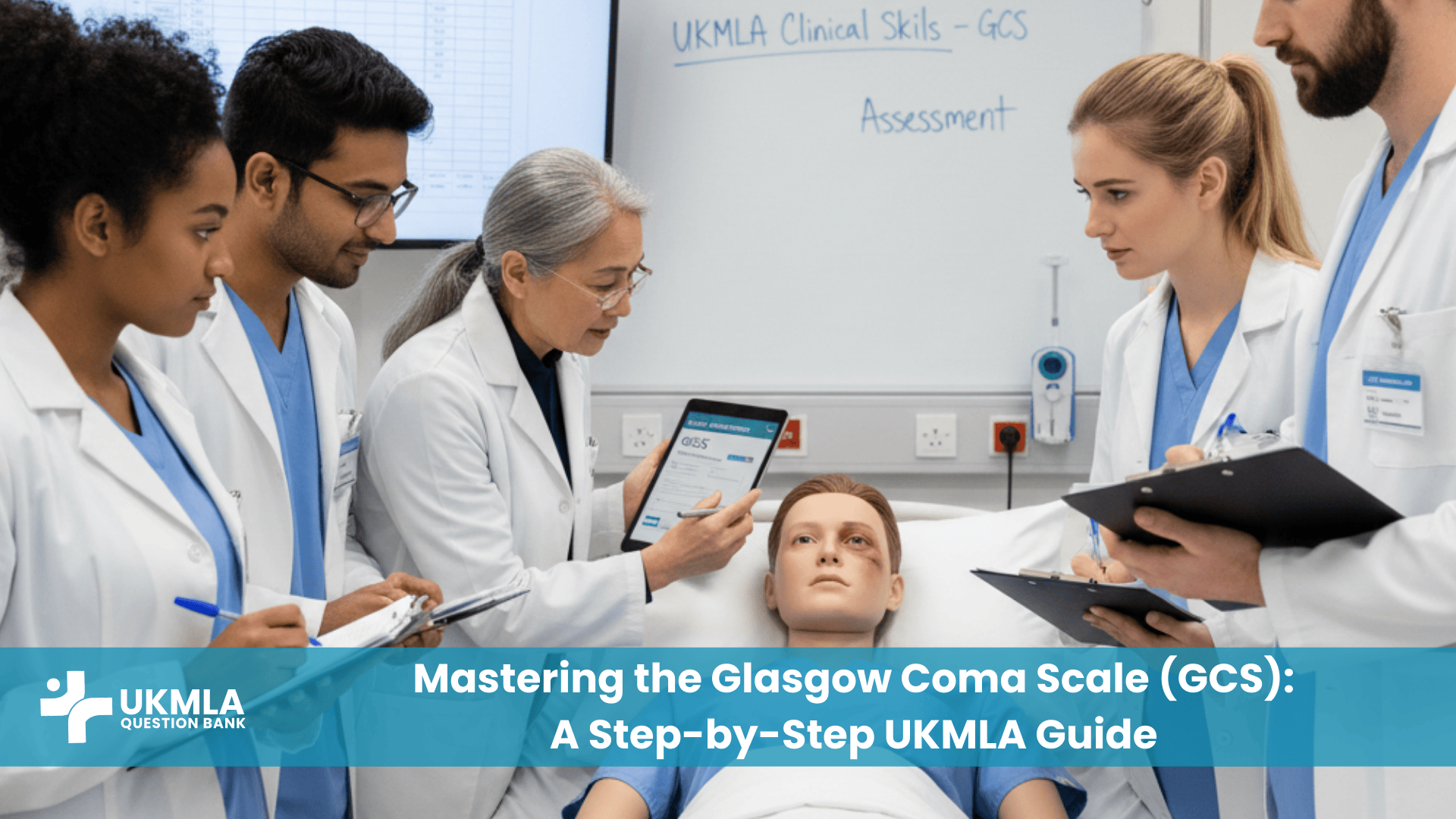The process of analysing your UKMLA question bank performance is the single most important factor that separates candidates who plateau from those who see consistent score improvement. It’s a common story: a diligent student spends hours every day completing hundreds, even thousands, of practice questions. They feel productive, ticking off question after question, yet their overall percentage score remains stubbornly stuck. They are putting in the work, but they aren’t getting smarter.
This frustrating experience stems from a fundamental misunderstanding of a question bank’s purpose. Its primary role is not to test you, but to teach you. And the most valuable lessons are hidden within your mistakes. Simply doing questions without a structured system for analysis is like driving without a map—you’re moving, but you have no idea if you’re getting closer to your destination.
This guide will provide you with a systematic, 5-step framework for analysing your UKMLA question bank performance. We will move beyond a superficial look at your overall score and dive into the data-driven techniques that allow you to accurately identify your weaknesses, understand the root cause of your errors, and turn that insight into a targeted and effective revision plan.
Key Takeaways
- Analysis is Everything: The real learning from a question bank occurs during the analysis of your performance, not during the act of answering the questions themselves.
- Go Beyond the Percentage: Look at detailed metrics, including performance by specialty, time per question, and the type of errors you are making (knowledge vs. technique).
- Create an Error Log: A detailed log of your incorrect answers is your personalised, high-yield study guide. It forces you to engage with your mistakes actively.
- Differentiate Your Errors: You must understand why you got a question wrong. Was it a pure knowledge gap, or did you misread the question, fall for a distractor, or manage your time poorly?
- Turn Data into Action: Use your performance analysis to create targeted study blocks that focus specifically on your identified weak areas, breaking the cycle of random, low-yield practice.
A 5-Step Guide to Analysing Your UKMLA Question Bank Performance
To truly benefit from your practice, you need a system. Follow these five steps after every block of questions you complete to transform your approach.
1. Look Beyond the Overall Percentage Score
The first metric everyone sees is “75% correct.” While encouraging, this number is dangerously superficial. To begin a meaningful analysis, you need to dig deeper into the analytics provided by your question bank.
Look for breakdowns of your performance by:
- Specialty/System: Are you scoring 85% in Cardiology but only 55% in Endocrinology? This is your first and most obvious clue about where to focus your content revision.
- Time per Question: Is your average time per question too high, suggesting you might struggle with the time pressure of the real exam? Are you getting questions wrong because you are rushing?
- Peer Comparison: How does your performance compare to your peers? If you are below average in a specific topic, it’s a clear signal that it requires more attention.
This initial data triage helps you move from a vague sense of your level to a data-informed overview of your relative strengths and weaknesses.
2. The Deep Dive: Question-by-Question Review
After completing a block of questions, you must review every single question, not just the ones you got wrong.
- For Incorrect Answers: This is your goldmine. You must understand not only why the correct answer is right but also why the answer you chose was wrong. What was the flaw in your reasoning? What piece of information in the vignette did you miss or misinterpret?
- For Correct Answers: Don’t skip these. Quickly re-read the explanation. Did you get it right for the right reasons, or was it a lucky guess? Confirming your logic solidifies your knowledge and builds confidence.
Key Point: The goal of a question bank is not to test you; it’s to teach you. Your incorrect answers are the most valuable learning opportunities you have. Embrace them and analyse them ruthlessly.
3. Create and Maintain a Detailed Error Log
Passive review is not enough. To truly learn from a mistake, you must actively engage with it. The most effective way to do this is by creating an error log or “mistake journal.” This can be a simple spreadsheet or a physical notebook. This log becomes the ultimate personalised study guide, a concept central to The Best Way to Use UKMLA Question Banks for Maximum Benefit.
Table 1: Template for an Effective Error Log
| Question ID | Topic / Specialty | My (Incorrect) Answer | Correct Answer | Reason for Error (Knowledge/Technique) | Key Learning Point (1-2 sentences) |
|---|---|---|---|---|---|
| 4582 | Cardiology | Pericarditis | Myocarditis | Knowledge Gap | Myocarditis can present with similar chest pain to pericarditis but is more likely to have raised troponins and signs of heart failure. |
| 3109 | Endocrinology | Start Metformin | Lifestyle Advice | Technique Error | Misread the question. The patient’s HbA1c was in the pre-diabetic range, where lifestyle advice is first-line, not immediate medication. |
| 5044 | Respiratory | Salbutamol Nebuliser | IV Magnesium Sulfate | Knowledge Gap | In life-threatening asthma, after initial nebs and steroids, IV magnesium sulfate is the next step before considering ITU. |
4. Differentiate Knowledge Gaps from Technique Errors
This step is a crucial part of filling out your error log. You must honestly diagnose why you made the mistake. Broadly, errors fall into two categories:
- Knowledge Gaps: You simply did not know the information. You didn’t know the diagnostic criteria for a disease, the first-line drug, or the mechanism of action. These are the easiest to fix: you need to go back to your textbook, video, or flashcards and learn the content.
- Technique Errors: You knew the information, but something went wrong in the application. This is often more frustrating but equally important to identify. Common technique errors include misreading the question stem, not paying attention to a key age or gender, getting distracted by a red herring, second-guessing your initial correct answer, or poor time management.
A Note from an Educational Supervisor: “The best trainees I see are the ones with excellent metacognition—the ability to think about their own thinking. When they make a mistake, they don’t just say ‘I got it wrong.’ They ask ‘Why did my thinking process lead me to the wrong answer?’ This self-analysis is the fastest path to improvement and is a core part of professional development, as outlined by the GMC.”
5. Turn Your Analysis into Targeted Action
The final step is to close the loop. Your analysis is useless if it doesn’t change what you do next. Based on your findings from the previous steps, you should now create your study plan for the next day or week.
This is where you can learn more about How to Create the Perfect UKMLA Study Plan: A 3-Month Template.
Table 2: Turning Analysis into Actionable Study Tasks
| Identified Weakness | Ineffective Action (Passive) | Effective Action (Active & Targeted) |
|---|---|---|
| Low score in Renal Medicine | “I’ll just do more random questions.” | “I will read the AKI and CKD chapters tonight. Tomorrow, I will do a 40-question block of only Renal questions in tutor mode.” |
| Repeatedly missing key details | “I need to be more careful.” | “For the next 3 days, I will use the highlighter tool on my q-bank to mark the age, gender, and key symptom in every question before I look at the options.” |
| Struggling with time management | “I need to go faster.” | “I will do one timed 20-question ‘mini-block’ every day, aiming to finish in the allocated time. I will analyze which question types are slowing me down.” |
| Falling for plausible distractors | “The questions are tricky.” | “In my error log, for every such question, I will write one sentence explaining exactly why the distractor I chose was less correct than the right answer.” |
Key Point: Effective analysis turns passive question answering into active, targeted revision. It stops the cycle of randomly completing questions and hoping for improvement, and replaces it with a deliberate, data-driven process that guarantees you are always working on your biggest weaknesses.
Frequently Asked Questions (FAQ) Your UKMLA Question Bank Performance Questions Answered
A good rule of thumb is to spend at least as much time analysing the block as you did completing it. If you spent one hour doing 40 questions, you should dedicate at least one hour to a thorough review and to updating your error log.
This is personal preference. A digital spreadsheet (like Google Sheets or Excel) is often more efficient as you can easily sort and filter by topic or error type. However, some learners find the physical act of writing in a notebook helps with memory retention.
While most high-quality UKMLA q-banks do, if yours doesn’t, you must track your performance manually. Keep a simple log of your percentage correct for each block, categorized by specialty, to identify patterns over time.
Reframe your mindset. An incorrect answer is not a failure; it is a gift. It is a precise, signposted opportunity to learn something you didn’t know. Every error you identify and fix before the exam is a point gained on the day.
You should review it frequently. A quick 15-minute read of your log from the past week is a fantastic, high-yield activity to do at the start of each study day.
In the early stages of revision, untimed ‘tutor’ mode is best for deep learning and analysis. As you get closer to the exam, you should switch to timed blocks to simulate exam conditions, but the need for detailed post-block analysis remains exactly the same.
Metacognition is “thinking about your own thinking.” In this context, it’s the process of not just identifying a mistake, but actively analysing the thought process that led you to it, so you can correct that process for the future. You can find more resources on this concept in journals on medical education.
Ask yourself this simple question after an error: “If I had all the time in the world and could use my textbook, could I have worked out the right answer?” If the answer is no, it’s a knowledge gap. If the answer is yes, it’s likely a technique error (you misread, rushed, etc.).
This may suggest a fundamental gap in your core knowledge. It might be time to pause intensive question blocks and spend a week going back to your primary learning resource (textbook/videos) for your weakest subjects before resuming practice questions.
While analysing incorrects is the priority, a quick review of your correct answers is also valuable. It confirms your reasoning was sound and helps you spot lucky guesses, which are essentially hidden knowledge gaps.
Conclusion: From Data to Diagnosis
Ultimately, analysing your UKMLA question bank performance is like taking a history and examining a patient. The “patient” is your own knowledge base, and the “symptoms” are your incorrect answers. A superficial approach won’t lead to a diagnosis. You need to investigate thoroughly, identify the root cause of the problem, and then prescribe a specific, targeted treatment.
By adopting this 5-step framework, you empower yourself to take control of your learning. You will move from being a passive participant to an active architect of your revision. This structured, analytical approach is one of the most important UKMLA Mistakes to Avoid and is fundamental to Mastering the UKMLA 2025.
Call to Action:
Are you ready to stop just doing questions and start learning from them? Apply this 5-step analytical framework to a high-quality UKMLA Question Bank and watch your performance improve.



